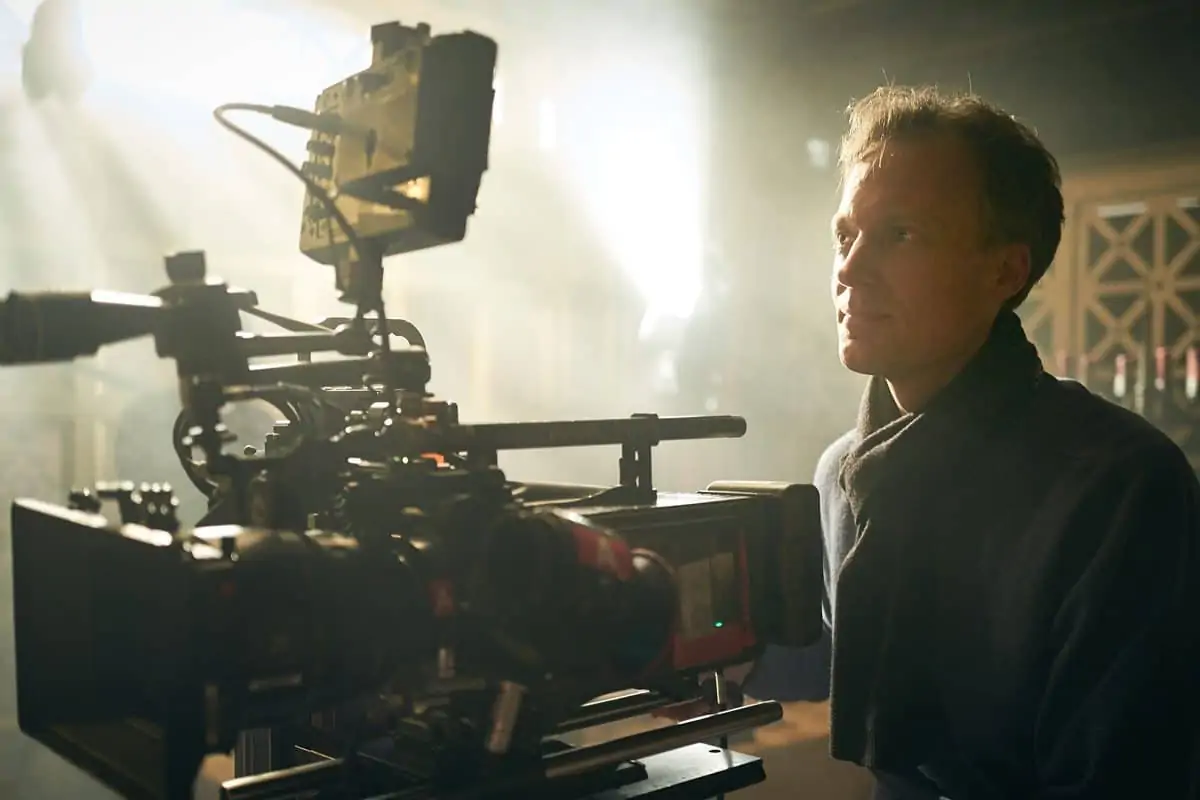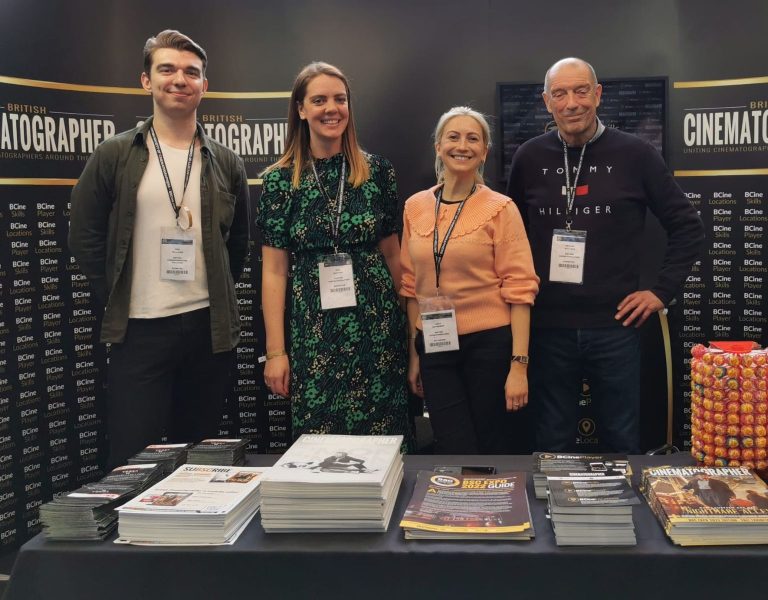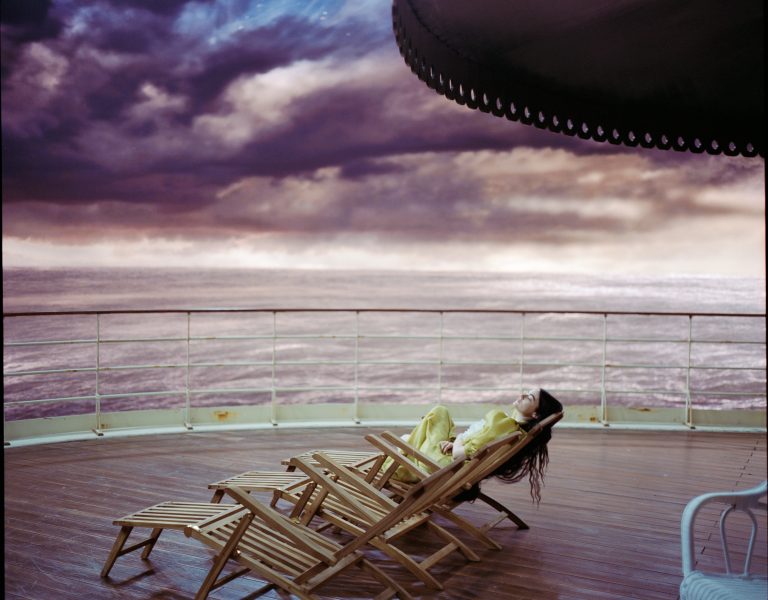Stealing the show
An ocean-hopping heist with heart, Culprits’ shifting timelines allowed DPs Philipp Blaubach BSC and Anna Valdez Hanks to get creative and colourful with their lensing choices.
“Complex and ambitious” is how cinematographer Philipp Blaubach BSC sums up Culprits, his most demanding collaboration yet with director J. Blakeson. With three different timelines, a jet-setting shooting schedule, and some nerve-shredding action sequences to tackle – all in the shadow of the pandemic – the Disney+ heist series would be as challenging to pull off as the ‘big job’ itself.
Culprits balances the genre’s trademark thrills and kills with emotive family drama. In an inventive twist on the classic caper, we’re introduced to the show’s titular reprobates three years after the heist of a lifetime as they’re trying to leave their criminal pasts behind; however, a ruthless assassin who’s picking them off one-by-one has other plans.
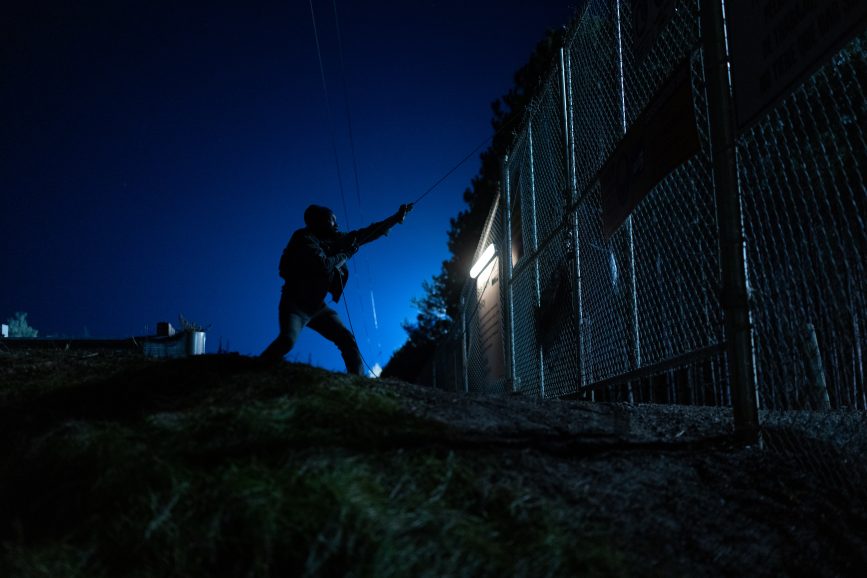
Lensing this blend of action and emotion appealed to Blaubach’s creative sensibilities. “It was very satisfying to shoot some of the more dramatic scenes where it’s more emotional and suspenseful,” he says. “You feel like you can really support the performance; the script and the actors are what it’s all about. With the action, it’s fun to shoot, but we’ve seen it before. The challenge was to make it fresh and original.”
Blaubach’s earlier work with Blakeson includes explosive BBC/HBO miniseries Gunpowder (2017) and neo-noir indie feature The Disappearance of Alice Creed (2009), but Culprits marked an epic new frontier for the pair. Already having established a successful shorthand on their prior projects was a great help; Blaubach also found it handy that Blakeson was Culprits’ creator and writer, as well as the block one director, when establishing their visual language. “For me as a cinematographer it makes a great difference to have a singular voice and vision [like Blakeson’s] behind a project like this,” he notes.
Changing perspectives
A three-strand timeline defines the show’s narrative: the Before, in the run-up to the heist; the Then, as the heist unfolds; and the Now, three years after the crime. Along with title cards, Blaubach’s cinematography offers visual cues for these shifting timelines.
To help him establish three subtly distinct looks, Blaubach turned to Jet Omoshebi, senior colourist at Goldcrest Post. The duo experimented with different film emulations, curves and grain structures to craft six different LUTs (one day- and one night-time LUT for each timeline) in the months leading up to production. (“The most LUTs I’ve ever done for a project!” the DP adds.)

Finding a look to suit a kaleidoscope of skin tones, all while keeping the visuals colourful and contrast-rich, was a delicate balance. “Gemma (Arterton, who plays ringleader Dianne) has light, porcelain skin, and to balance that was difficult while maintaining a bold contrast and strong colours for the look we wanted,” notes Blaubach. “We also didn’t want it to go too dark over Nathan (Stewart-Jarrett, who plays Joe/Muscle). He came up to me and I showed him the lighting on the monitor. I wanted to make sure that he was comfortable [with the LUT], but also we felt it was really important to have a strong look and not compromise.”
“Philipp was very organised and meticulous about shooting tests,” remembers Omoshebi. “He gave me some references and we designed some LUTs which he went away and worked with, he and J. then came back and we refined the looks. We repeated this process for each timeline of the story until we had destiny, but sympathetic looks. It made the final DI grade very simple.”
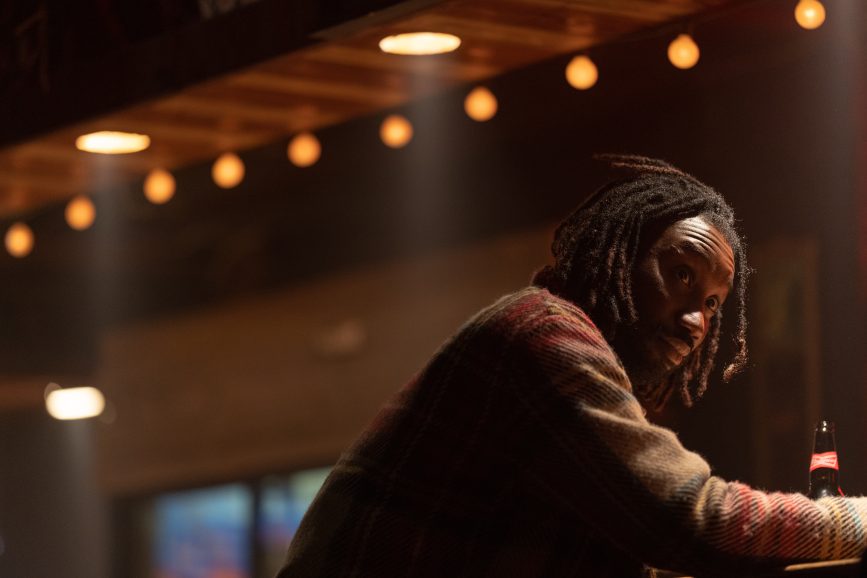
The majority of the film is set in the Now, where viewers first meet Stewart-Jarrett’s Joe. Dubbed ‘Muscle’ during his heist days, Joe is now happily settled into suburban life in Washington, US, with his fiancé and stepchildren. Here, the colour palette is warmer and vibrant, to reflect his happiness at his new status of family man. In contrast, for the high-octane heist scenes – the Then – Blaubach and Omoshebi worked in the grade to create a silver retention (bleach bypass) effect to take the colour out of the shots, bring the contrast up and enhance skin tones.
Put to the test
Blaubach’s choice of glass was another important visual cue. After a lengthy testing period, he and Blakeson settled on Tribe7’s Blackwings for the Now. They were “really wonderful, warm and characterful, and had beautiful flares – and weren’t too sharp either”; an ideal contrast to the clarity of the Sony Venice 6K.
The Then was captured on the super-sharp ARRI Signature Primes, which suited the action and violence of the heist sequences. Blaubach felt that shooting more observationally and handheld on the longer end of these lenses gave these sequences a special energy. “Normally J. and I like a more elegant, composed style, but we felt we needed to really amp up the energy here,” he adds.

The Before scenes, where Joe is being recruited for the heist, were shot on Caldwell Chameleon anamorphics: “It was nice to go a little bit softer and slightly more distorted and characterful in that timeline.”
Overall, Blaubach and Blakeson’s influences for Culprits’ look ranged from street photography to ‘90s cinema. “We wanted this to feel grounded on one level, but heightened and slightly stylised on another, so that it is an enjoyable show,” the DP says. “It’s not a kitchen sink drama, it’s a heightened tale. But what I like about street photography references is that they’ve often managed to find the cinematic in the mundane.”
World of crime
As Culprits’ deadly assassin tracks his victims down all around the world, filming naturally took an international scale. Filming largely took place between Europe and Ontario, Canada (the latter doubling for Washington State, US). Perhaps the series’ most dramatic sequence was the heist itself, shot largely on location in Manchester, as well as on an LED volume.
The heist was scripted to a very specific location – a warehouse surrounded by four streets – and while searches for the perfect spot in Birmingham and London proved fruitless, Manchester’s Northern Quarter fitted the bill perfectly. The city council allowed them to have complete control of the streets for the high-speed car chases and FPV low-altitude drone work undertaken by Fleye (sister company Flying Pictures looked after aerial photography for the London scrapyard scenes).

For a climactic scene during the heist when the getaway car has an enormous crash, Blaubach wanted to put a different spin on the visuals so used an LED volume to allow him more control and precision in photographing the action. “We wanted those driving scenes to feel really immersive and shoot the crash from the back seat. To get the moment just before the collision with a car unexpectedly pulling out of a side street we used a plate shot from a racing drone. We got an FPV pilot to fly down the road on windscreen height towards the stunt car and then, just at the last second, pull up and over the roof. It looked awesome on the monitor even when we were shooting it,” he says.
MARS Volume, the London-based virtual production studio from Bild, proved the ideal facility for the volume work, with its enormous curved LED wall and LED ceiling. Indeed, Blaubach admits he is now rather a fan of using the volume for specific sequences such as vehicle work. “The interactive lighting you get from the video screens is fantastic. It’s incredibly complex and real, with subtle reflections in the steering wheel and on the window frame that completely sell the illusion. It’s very satisfying, like pulling off a magic trick. And it doesn’t generally require any post-production because it’s all in-camera.”
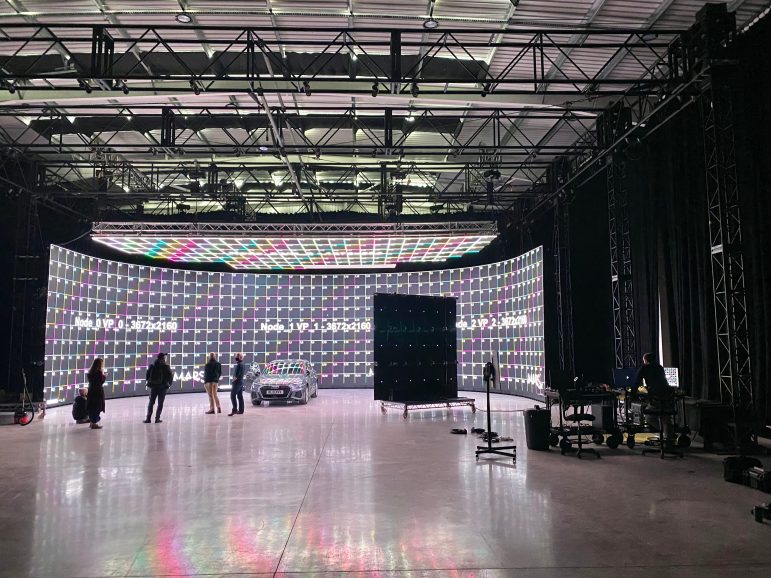
Artist at work
A challenging location from both a lighting and logistical perspective was London’s Tate Modern, where Joe is recruited by Diane to take part in the heist in the Before timeline. It was written into the script that the pair would meet at the gallery’s Rothko Room, specifically the area featuring the artist’s Seagram Murals. “I love both Rothko and the Tate Gallery, so when I heard we got permission to shoot in the Tate, I was excited,” enthuses Blaubach.
Of course, shooting at such a prestigious setting came with a number of restrictions. Firstly, the production only had access to it after closing time; this meant equipment could only be brought in from 6pm and had to be out by midnight, leaving the team with less than four hours to actually shoot.
They also weren’t allowed to exceed a certain light level for both conservation and artistic reasons. The Rothko Room is a very dark, moody room as per the artist’s own stipulations – Rothko himself insisted his work was to be viewed at 30 lux. Blaubach and his team were not allowed to use any direct spotlights on the paintings, and had to apply special ultraviolet filters on all lighting units. Unable to use tungsten lights, they chose LED units including Astera Tubes and ARRI SkyPanels, as well as a helium inflatable mattress for the ceiling.

“We were constantly overseen by a conservator who came with her own light meter and was watching what we were doing, and what units we were bringing in,” Blaubach remembers. “But it was still fun to light with the limited resources that were allowed, and to light the Rothko paintings in a way that does them justice. For me the Rothkos were almost like a celebrity appearance – we’d better make them look good!”
The DP was satisfied with the resulting shots. “When you’re in the Rothko Room, the way the paintings are lit in the gallery is quite flat and you don’t pick out the brushstrokes or the nuances. But I found that if we add just one of two lights from a strategic angle, we could really get that bit of sheen and suddenly that paintwork – the texture and brushstrokes – came out.”
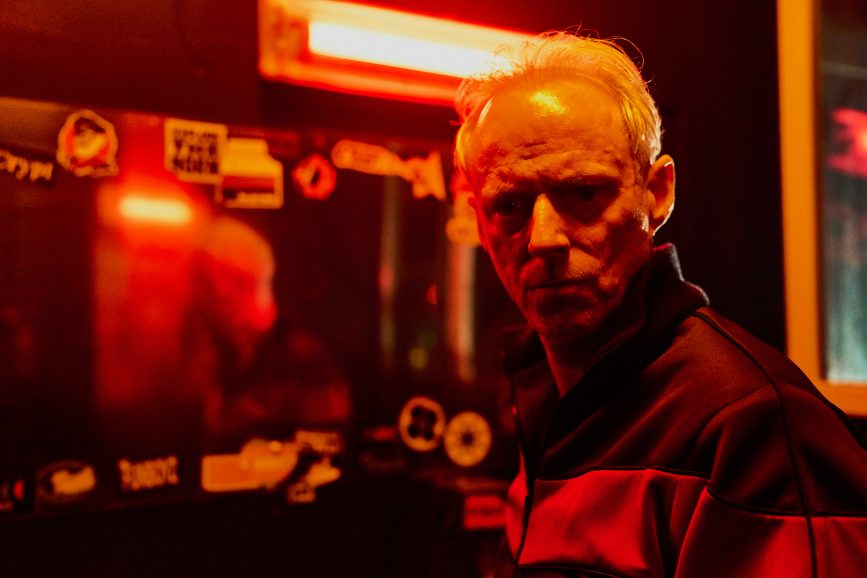
Lights and locations
Cinematographer Anna Valdez Hanks joined the eight-month shoot for episodes five, six and seven with director Claire Oakley. Hanks had admired Oakley’s 2019 debut Make Up and the chance to collaborate on something fun and visually slick appealed. “I liked the ambition behind the show,” she says. “We had an energetic young cast and a great crew.”
Hanks’ episodes involved two new studio builds and mostly new locations. Her challenge was to integrate the show’s strong style, set by Blaubach and Blakeson, across the diverse set of new locations. One particular spot, an old French mansion, lacked the strong, often primary colours that were used as a visual motif. “There was little motivation for strongly mixed lighting there so I focused on using contrast with hard lights, in an interior darkened by two 40’x 40’ eyebrows suspended by cranes on the south side,” remembers Hanks.
The other locations took Hanks and Oakley more safely into the Culprits’ world, including an abandoned nightclub – one of the studio builds. Hanks recalls: “Production designer Victor Molero made a brilliant design of walls of water tanks. Inside each one we placed a single Astera LED bulb. Using these, plus rigs of more usual nightclub lighting (Vari-Lites and MAC Auras) we created four different modes of lighting in the nightclub, using colour and quality of light to really drive mood and the narrative.”
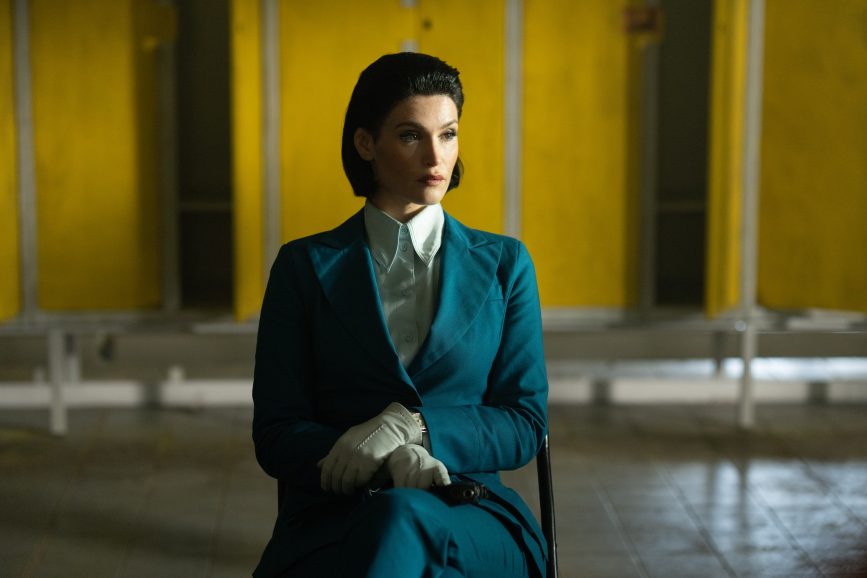
What made Culprits so special for Hanks was that it gave her plenty of opportunities to innovate and take risks. One such risk involved lighting some dialogue scenes in the nightclub with only static Vari-Lites suspended from the ceiling. “There were pools and slashes of light illuminating the cast, against a dark background – à la Caravaggio, I hoped!” she says.
Valdez Hanks’ favourite experience on the shoot has a touchingly personal connection. “We filmed an interrogation in a wind tunnel in Farnborough. The location was formerly used to develop aircraft propellors and my grandad was an engineer there after the war. It was strange to light that space, feeling a connection to him also once working there.”

